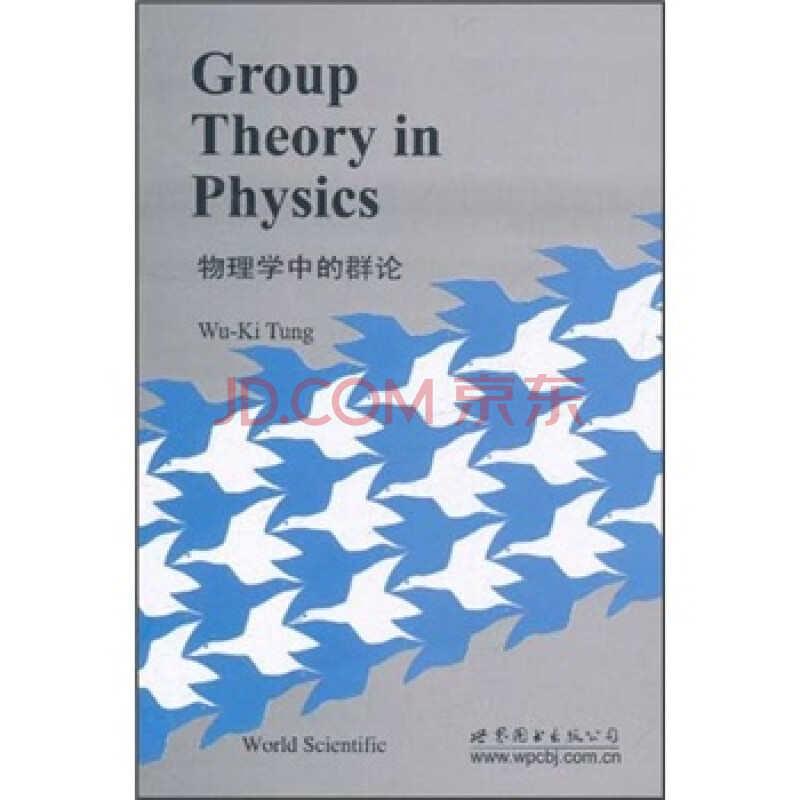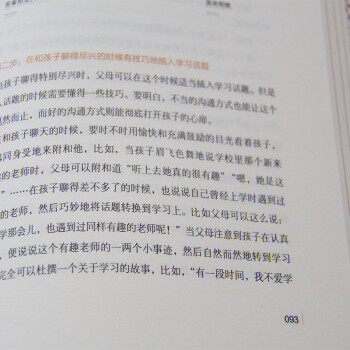热门推荐商品
-
神奇的逻辑思维游戏书 5-13岁提升孩子逻辑思维训练
¥22.50
-
正面管教 修订版 如何不惩罚不娇纵有效管教孩子 育儿百科 最温柔的教养 樊登 早教书
¥19.00
-
一本书读懂中国茶
¥24.90
-
中国国家地理:最好的时光在路上
¥24.90
-
正面管教儿童行为心理学
¥19.00
-
正面管教男孩100招(养育男孩全书)父母的语言话术
¥18.00
-
陪孩子度过7~9岁叛逆期(7-9岁关键养育 叛逆不是孩子的错 男孩女孩自驱型成长)
¥16.30
-
女生呵护指南
¥39.00
-
西尔斯怀孕百科
¥41.50
-
协和医院专家教你吃对不生病:糖尿病吃什么宜忌速查
¥14.90
- 商品名称:物理学中的群论
- 商品编号:10914275
内容简介
group theory provides the natural mathematical language to formulate symmetry principles and to derive their consequences in mathematics and in physics. the "special functions" of mathematical physics, which pervade mathematical analysis,classical physics, and quantum mechanics, invariably originate from underlying symmetries of the problem although the traditional presentation of such topics may not expressly emphasize this universal feature. modern developments in all branches of physics are putting more and more emphasis on the role of symmetries of the underlying physical systems. thus the use of group theory has become increasingly important in recent years. however, the incorporation of group theory into the undergraduate or graduate physics curriculum of most universities has not kept up with this development. at best, this subject is offered as a special topic course, catering to a restricted class of students. symptomatic of this unfortunate gap is the lack of suitable textbooks on general group-theoretical methods in physics for all serious students of experimental and theoretical physics at the beginning graduate and advanced undergraduate level. this book is written to meet precisely this need.there already exist, of course, many books on group theory and its applications in physics. foremost among these are the old classics by weyl, wigner, and van der waerden. for applications to atomic and molecular physics, and to crystal lattices in solid state and chemical physics, there are many elementary textbooks emphasizing point groups, space groups, and the rotation group. reflecting the important role played by group theory in modern elementary particle theory, many current books expound on the theory of lie groups and lie algebras with emphasis suitable for high energy theoretical physics. finally, there are several useful general texts on group theory featuring comprehensiveness and mathematical rigor written for the more mathematically oriented audience. experience indicates, however, that for most students, it is difficult to find a suitable modern introductory text which is both general and readily understandable.
目录
prefacechapter 1 introduction
1.1 particle on a one-dimensional lattice
1.2 representations of the discrete translation operators
1.3 physical consequences of translational symmetry
1.4 the representation functions and fourier analysis
1.5 symmetry groups of physics
chapter 2 basic group theory
2.1 basic definitions and simple examples
2.2 further examples, subgroups
2.3 the rearrangement lemma and the symmetric (permutation) group
2.4 classes and invariant subgroups
2.5 cosets and factor (quotient) groups
2.6 homomorphisms
2.7 direct products problems
chapter 3group representations
3.1 representations
3.2 irreducible, inequivalent representations
3.3 unitary representations
3.4 schur's lemmas
3.5 orthonormality and completeness relations of irreducible representation matrices
3.6 orthonormality and completeness relations of irreducible characters
3.7 the regular representation
3.8 direct product representations, clebsch-gordan coefficients problems
chapter 4general properties of irreducible vectors and operators
4.1 irreducible basis vectors
4.2 the reduction of vectors——projection operators for irreducible components
4.3 irreducible operators and the wigner-eckart theorem problems
chapter 5 representations of the symmetric groups
5.1 one-dimensional representations
5.2 partitions and young diagrams
5.3 symmetrizers and anti-symmetrizers of young tableaux
5.4 irreducible representations of sn
5.5 symmetry classes of tensors problems
chapter 6 one-dimensional continuous groups
6.1 the rotation group so(2)
6.2 the generator of so(2)
6.3 irreducible representations of so(2)
6.4 invariant integration measure, orthonormality and completeness relations
6.5 multi-valued representations
6.6 continuous translational group in one dimension
6.7 conjugate basis vectors problems
chapter 7 rotations in three-dimensional space——the group so(3)
7.1 description of the group so(3)
7.1.1 the angle-and-axis parameterization
7.1.2 the euler angles
7.2 one parameter subgroups, generators, and the lie algebra
7.3 irreducible representations of the so(3) lie algebra
7.4 properties of the rotational matrices dj(a, fl, 7)
7.5 application to particle in a central potential
7.5.1 characterization of states
7.5.2 asymptotic plane wave states
7.5.3 partial wave decomposition
7.5.4 summary
7.6 transformation properties of wave functions and operators
7.7 direct product representations and their reduction
7.8 irreducible tensors and the wigner-eckart theorem problems
chapter 8the group su(2) and more about so(3)
8.1 the relationship between so(3) and su(2)
8.2 invariant integration
8.30rthonormality and completeness relations of dj
8.4 projection operators and their physical applications
8.4.1 single particle state with spill
8.4.2 two particle states with spin
8.4.3 partial wave expansion for two particle scattering with spin
8.5 differential equations satisfied by the dj-functions
8.6 group theoretical interpretation of spherical harmonics
8.6.1 transformation under rotation
8.6.2 addition theorem
8.6.3 decomposition of products of yim with the same arguments
8.6.4 recursion formulas
8.6.5 symmetry in m
8.6.60rthonormality and completeness
8.6.7 summary remarks
8.7 multipole radiation of the electromagnetic field problems
chapter 9euclidean groups in two- and three-dimensional space
9.1 the euclidean group in two-dimensional space e2
9.2 unitary irreducible representations of e2——the angular-momentum basis
9.3 the induced representation method and the plane-wave basis
9.4 differential equations, recursion formulas,and addition theorem of the bessel function
9.5 group contraction——so(3) and e2
9.6 the euclidean group in three dimensions: e3
9.7 unitary irreducible representations of e3 by the induced representation method
9.8 angular momentum basis and the spherical bessel function problems
chapter 10 the lorentz and poincarie groups, and space-time symmetries
10.1 the lorentz and poincare groups
10.1.1 homogeneous lorentz transformations
10.1.2 the proper lorentz group
10.1.3 decomposition of lorentz transformations
10.1.4 relation of the proper lorentz group to sl(2)
10.1.5 four-dimensional translations and the poincare group
10.2 generators and the lie algeebra
10.3 irreducible representations of the proper lorentz group
10.3.1 equivalence of the lie algebra to su(2) x su(2)
10.3.2 finite dimensional representations
10.3.3 unitary representations
10.4 unitary irreducible representations of the poincare group
10.4.1 null vector case (pu= 0)
10.4.2 time-like vector case (c1>3 0)
10.4.3 the second casimir operator
10.4.4 light-like case (c1 = 0)
10.4.5 space-like case (c1<0)
10.4.6 covariant normalization of basis states and integration measure
10.5 relation between representations of the lorentz and poincare groups-relativistic wave functions, fields, and wave equations
10.5.1 wave functions and field operators
10.5.2 relativistic wave equations and the plane wave expansion
10.5.3 the lorentz-poincare connection
10.5.4 "deriving" relativistic wave equations problems
chapter 11 space inversion invariance
11.1 space inversion in two-dimensional euclidean space
11.1.i the group 0(2)
11.1.2 irreducible representations of 0(2)
11.1.3 the extended euclidean group e2 and its irreducible representations
11.2 space inversion in three-dimensional euclidean space
11.2.1 the group 0(3) and its irreducible representations
11.2.2 the extended euclidean group e3 and its irreducible representations
11.3 space inversion in four-dimensional minkowski space
11.3.1 the complete lorentz group and its irreducible representations
11.3.2 the extended poincare group and its irreducible representations
11.4 general physical consequences of space inversion
11.4.1 eigenstates of angular momentum and parity
11.4.2 scattering amplitudes and electromagnetic multipole transitions problems
chapter 12 time reversal invariance
12.1 preliminary discussion
12.2 time reversal invariance in classical physics
12.3 problems with linear realization of timereversal transformation
12.4 the anti-unitary time reversal operator
12.5 irreducible representations of the full poincare group in the time-like case
12.6 irreducible representations in the light-like case (c1 = c2 = 0)
12.7 physical consequences of time reversal invariance
12.7.1 time reversal and angular momentum eigenstates
12.7.2 time-reversal symmetry of transition amplitudes
12.7.3 time reversal invariance and perturbation amplitudes problems
chapter 13 finite-dimensional representations of the classical groups
13.1 gl(m): fundamental representations and the associated vector spaces
13.2 tensors in v x v, contraction, and gl(m) transformations
13.3 irreducible representations of gl(m) on thespace of general tensors
13.4 irreducible representations of other classical linear groups
13.4.1 unitary groups u(m) and u(m+, m_)
13.4.2 special linear groups sl(m) and special unitary groups su(m+, m_)
13.4.3 the real orthogonal group o(m+,m_; r) and the special real orthogonal group so(m +, m_; r)
13.5 concluding remarksproblems appendix inotations and symbols
i.1 summation convention
i.2 vectors and vector indices
i.3 matrix indices
appendix ii summary of linear vector spaces
ii.1 linear vector space
ii.2 linear transformations (operators) on vector spaces
ii.3 matrix representation of linear operators
ii.4 dual space, adjoint operators
ii.5 inner (scalar) product and inner product space
ii.6 linear transformations (operators) on inner product spaces
appendix illgroup algebra and the reduction of regular representation
iii. 1 group algebra
1ii.2 left ideals, projection operators
iii.3 idempotents
iii.4 complete reduction of the regular representation
appendix ivsupplements to the theory of symmetric groups sn
appependix vclebsch-gordan coefficients and spherical harmonics
appendix virotational and lorentz spinors
appendix viiunitary representations of the proper lorentz group
appendix viii anti-linear operators
references and bibliography
index


















 沪公网安备 31010402003631号
沪公网安备 31010402003631号